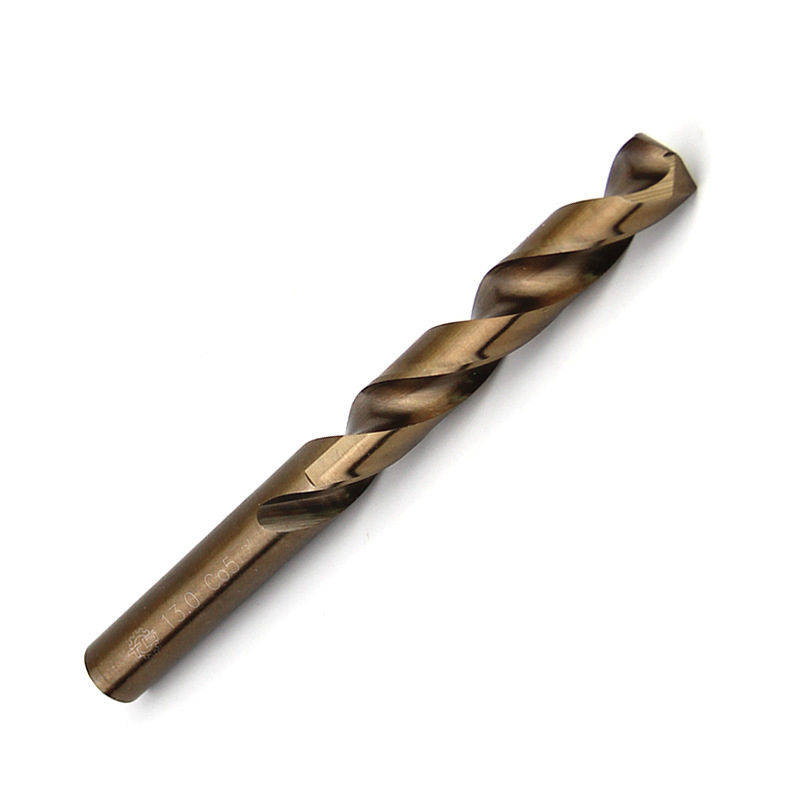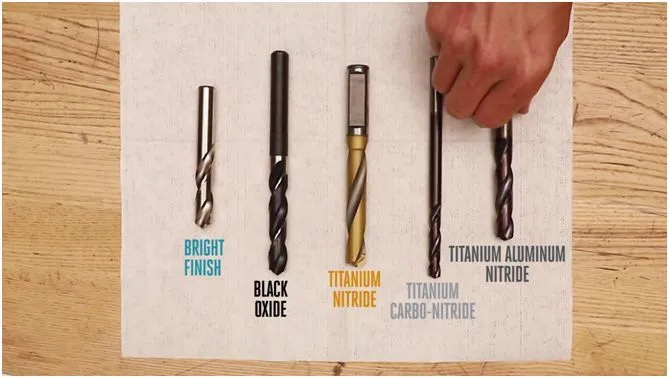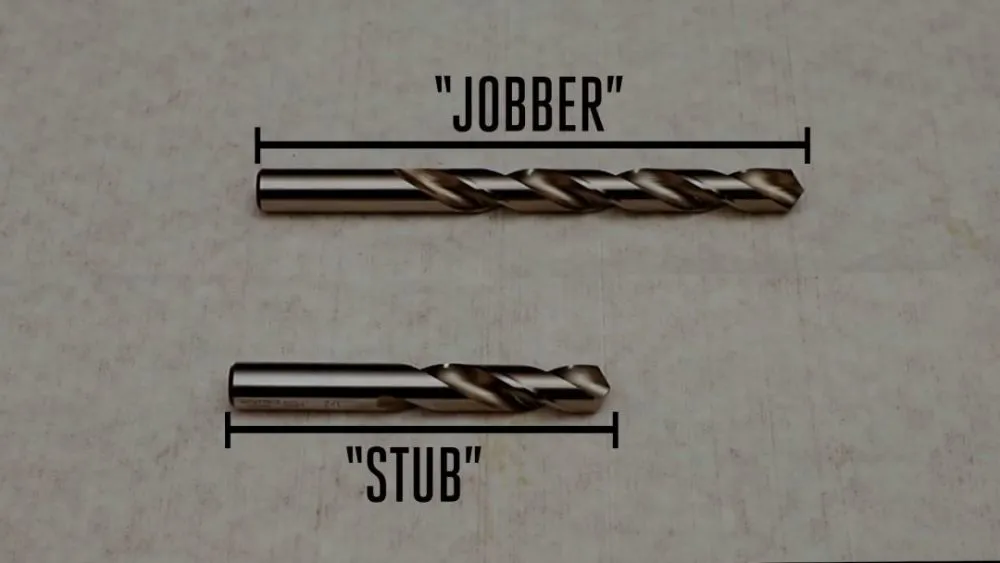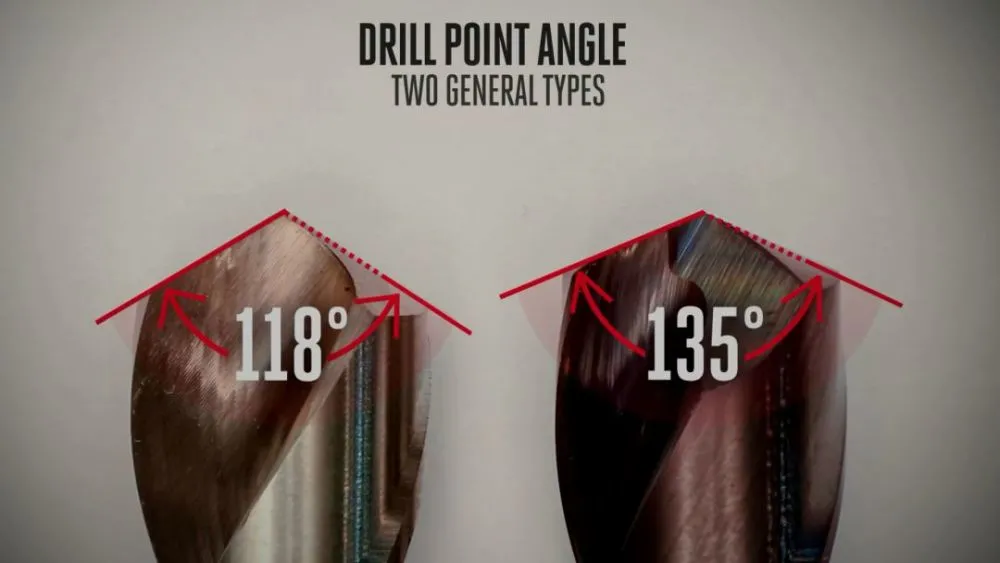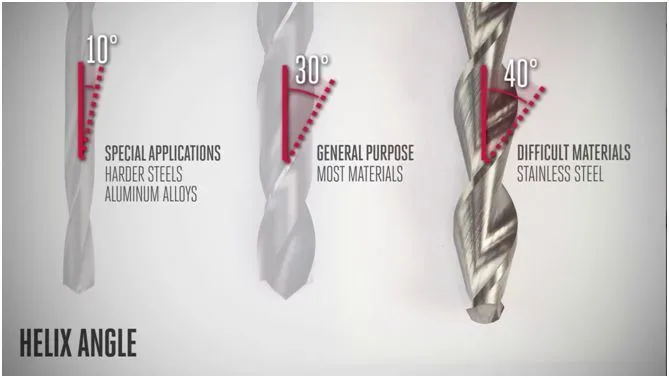Today, I will share how to select a drill bit through three basic conditions of the drill bit, which are: material, coating and geometric characteristics.
1
How to choose the material of the drill
Materials can be roughly divided into three types: high-speed steel, cobalt-containing high-speed steel and solid carbide.
High-speed steel is currently the most widely used and cheapest cutting tool material. The drill bit of high-speed steel can be used not only on hand electric drills, but also in environments with better stability such as drilling machines. Another reason for the longevity of high-speed steel may be that the tool made of high-speed steel can be repeatedly ground. Due to its low price, it is not only used for grinding into drill bits, but also widely used in turning tools.
Cobalt High Speed Steel (HSSCO):
Cobalt-containing high-speed steel has better hardness and red hardness than high-speed steel, and the increase in hardness also improves its wear resistance, but at the same time sacrifices part of its toughness. The same as high-speed steel: they can be used to improve the number of times by grinding.
Carbide (CARBIDE):
Cemented carbide is a metal-based composite material. Among them, tungsten carbide is used as the matrix, and some materials of other materials are used as the binder to be sintered by a series of complex processes such as hot isostatic pressing. Compared with high-speed steel in terms of hardness, red hardness, wear resistance, etc., there is a huge improvement, but the cost of cemented carbide tools is also much more expensive than high-speed steel. Carbide has more advantages than previous tool materials in terms of tool life and processing speed. In the repeated grinding of tools, professional grinding tools are required.
2
How to choose a drill coating
Coatings can be roughly classified into the following five types according to the scope of use.
Uncoated:
Uncoated knives are the cheapest and are usually used to machine softer materials such as aluminum alloys and mild steel.
Black oxide coating:
Oxidized coatings can provide better lubricity than uncoated tools, and are also better in terms of oxidation and heat resistance, and can increase service life by more than 50%.
Titanium nitride coating:
Titanium nitride is the most common coating material and is not suitable for processing materials with relatively high hardness and high processing temperature.
Titanium carbonitride coating:
Titanium carbonitride is developed from titanium nitride and has higher high temperature and wear resistance, usually purple or blue. Used to machine cast iron workpieces in the Haas workshop.
Aluminum Nitride Titanium Coating:
Aluminum titanium nitride is more resistant to high temperatures than all the above coatings, so it can be used in higher cutting environments. For example, processing superalloys. It is also suitable for the processing of steel and stainless steel, but due to the elements containing aluminum, chemical reactions will occur when processing aluminum, so avoid processing aluminum-containing materials.
3
Drill bit geometry
Geometric features can be divided into the following 3 parts:
Length
The ratio of length to diameter is called double diameter, and the smaller the double diameter, the better the rigidity. Selecting a drill with the edge length just for chip removal and the short overhang length can improve the rigidity during machining, thereby increasing the service life of the tool. Insufficient blade length is likely to damage the drill.
Drill tip angle
A drill tip angle of 118° is probably the most common in machining and is often used for soft metals such as mild steel and aluminum. The design of this angle is usually not self-centering, which means that it is inevitable to machine the centering hole first. The 135° drill tip angle usually has a self-centering function. Since there is no need to machine the centering hole, this will make it unnecessary to drill the centering hole separately, thus saving a lot of time.
Helix angle
A helix angle of 30° is a good choice for most materials. But for environments that require better chip evacuation and a stronger cutting edge, a drill with a smaller helix angle can be selected. For difficult-to-machine materials such as stainless steel, a design with a larger helix angle can be selected to transmit torque.
Post time: Jun-02-2022

